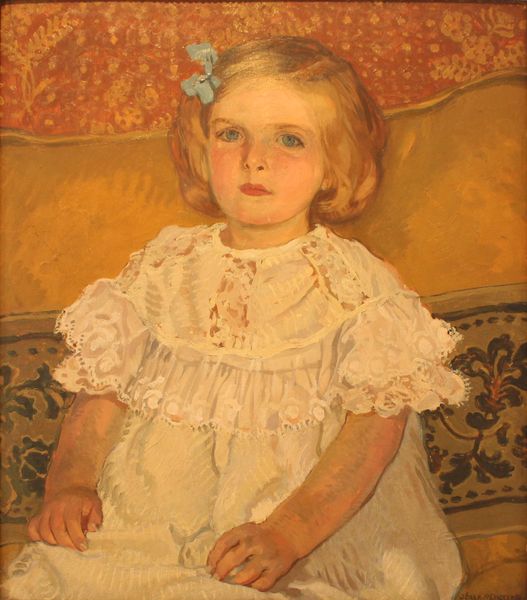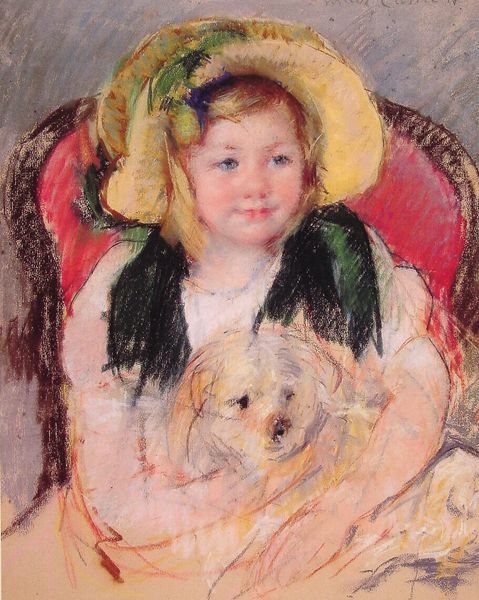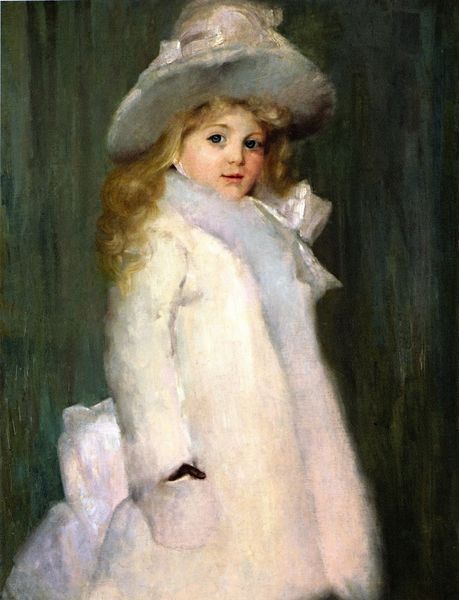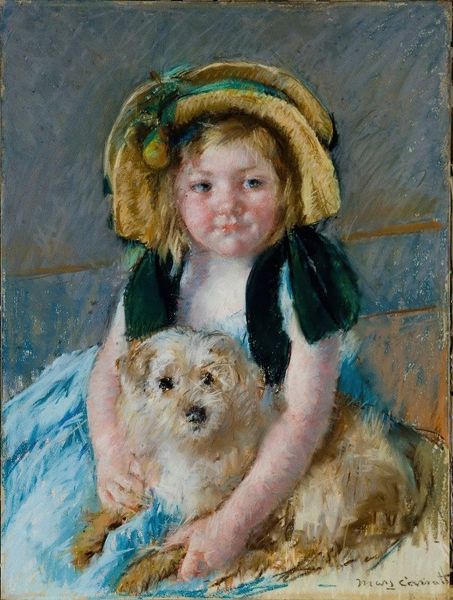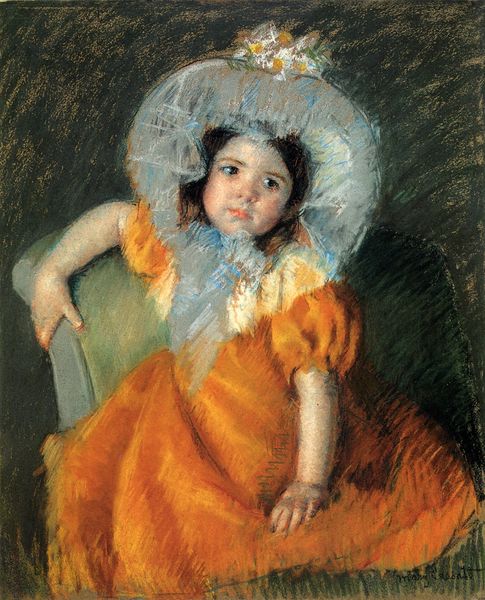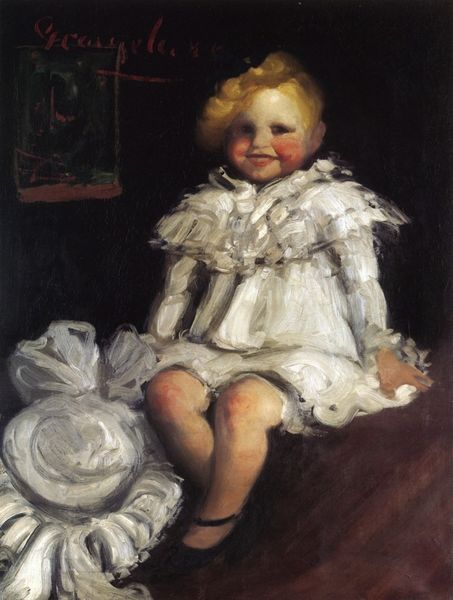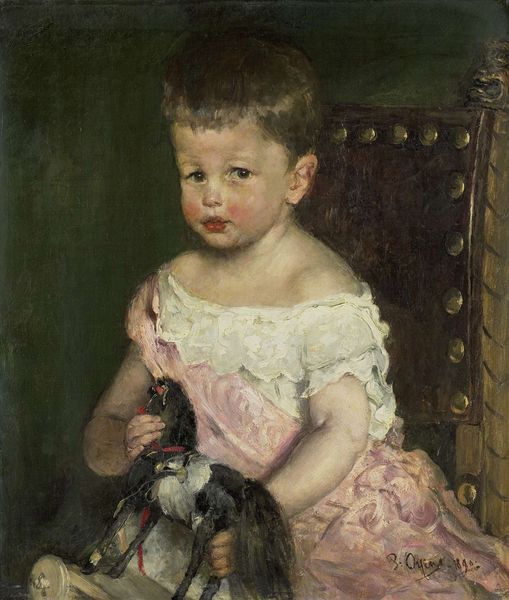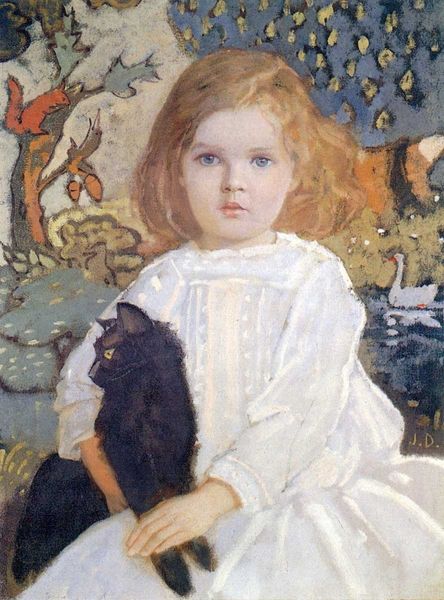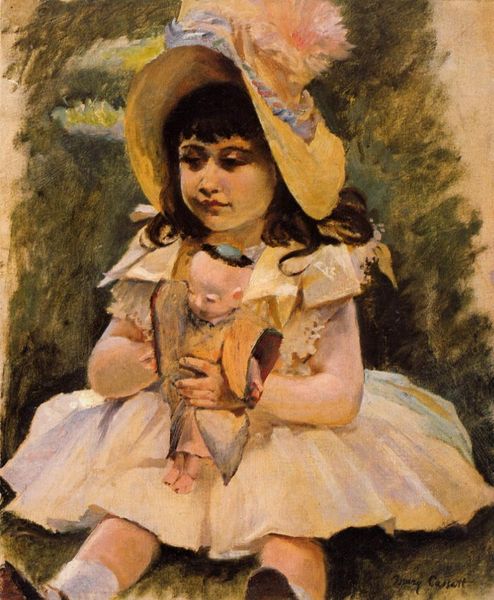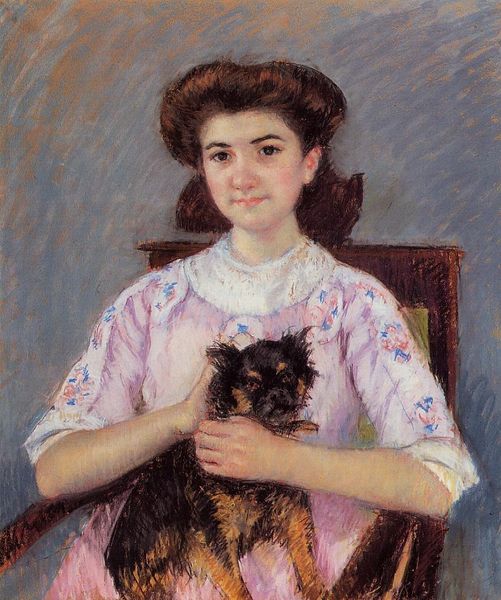
Copyright: Public domain
Editor: This is Tom Roberts’ "Miss Minna Simpson", created in 1886 using oil paint. What strikes me immediately is the contrast between the dark background and the almost ethereal glow of Minna and her white cat. What do you see in this piece? Curator: From a formalist perspective, the success of this work hinges on its compositional balance. Observe how Roberts manipulates light and shadow to create depth, framing Miss Minna within the darker tones to emphasize her innocence. Note the strategic use of impasto, particularly in the whites of her attire and the cat’s fur, lending the textures a palpable quality. Editor: So, it's more about the technical mastery and visual elements than the story behind the painting? Curator: Precisely. The narrative, while charming, is secondary. The interplay of line, color, and form constructs the artistic experience. The seemingly spontaneous brushstrokes contribute to a dynamic surface, vital to engaging the viewer beyond a superficial representation. Do you notice how the eye is guided from the table's edge upward towards her face, creating a triangular structure? Editor: I see it now. It's as if Roberts used those shapes and contrasts to subtly lead you to what he wants you to notice. So, it’s not just a portrait, it's a structured composition meant to evoke certain feelings through purely visual means? Curator: Exactly. Roberts orchestrates these visual elements to transcend mere representation and to access a more profound aesthetic realm. Ultimately, its value is intrinsic, rooted in its skillful construction and manipulation of pictorial space. Editor: That makes me look at it in a completely different way. Thanks! Curator: Indeed. Approaching art through its formal properties often unveils layers previously unseen.
Comments
No comments
Be the first to comment and join the conversation on the ultimate creative platform.
